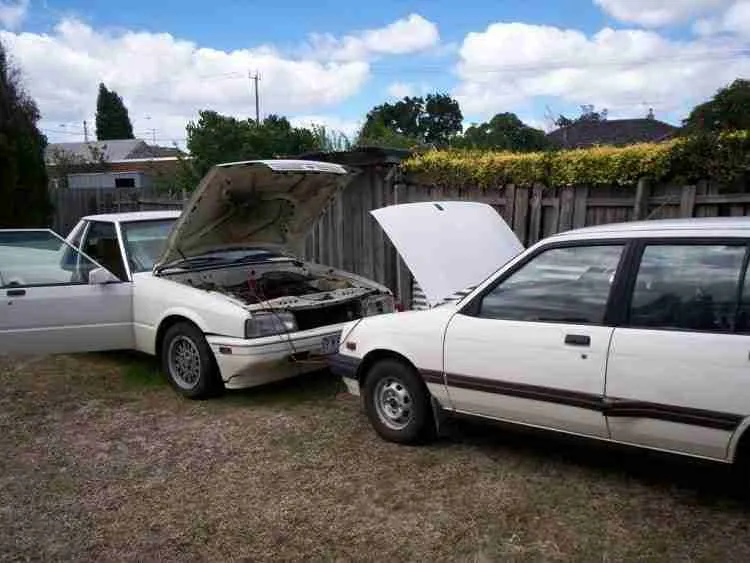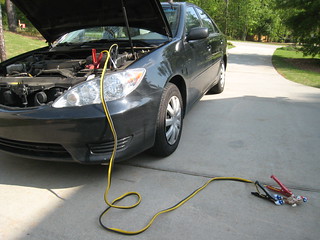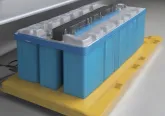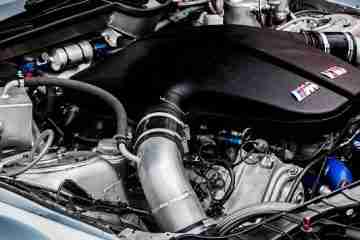Is It Dangerous To Jump Start a Car? Facts vs Myths/ The Truth

Sometimes it doesn’t matter how careful you are, your car battery can still ‘die’. When this happens, you need to jumpstart your battery. Overall, jump-starting a car battery is relatively safe as long as you take a few safety precautions.
However, some myths can make you think only a professional is qualified to recharge a car battery. To help clear up the confusion, here is the truth about jump-starting a car.
What You Need to Jump Start a Car
You probably already know that jumper cables are essential to charge a car’s battery. You should keep a set in your vehicle at all times. Most batteries don’t fail when the car’s parked in your garage, instead it usually happens when you’re away from home. Along with jumper cables, there are a few other tools you’ll want to have close by so it won’t be dangerous to jump-start the car.
- Sturdy rubber gloves
- Safety google – preferably made from a splash-proof polycarbonate material
- A small wire brush
- Another vehicle – unless you have a portable battery charger
The rubber gloves will protect your hands from accidental shocks, while the safety goggles will prevent battery acid from splashing in your eyes. It should be noted that this is rare but it’s still a good idea to be protected.
A wire brush is used to wipe off the white powder that can collect on battery terminals. The powder is corrosive and you don’t want to touch it with your bare hands. A portable battery charger will jump your car without the need for another vehicle. However, if you do need to connect the cables to a second car battery check to ensure the voltages are compatible.
How to Safely Jump Start Your Car
If you don’t follow certain safety steps, it will be dangerous to jump start a car battery. Here are a few tips to help you stay safe. The first step is to read the vehicle’s owner’s manual. There will be a section on the car’s battery that will include how and where to attach the jumper cables.
The newer model vehicle typically has lugs where the jumper cables attach, instead of directly on the battery. It’s a safer way to charge the battery but the lugs can be difficult to find if you don’t know what to look for.
- Make sure both batteries match in voltage. The one being charged and the battery supplying the charge.
- The vehicles should be parked facing each other but not touching. Electrical currents can run through the frames resulting in a potentially dangerous situation.
- You want to make sure both vehicle engines are turned off during charging. The cars should also be in ‘neutral’ or ‘park’ during charging.
- Unplug any mobile devices before attaching the cables. The power surge that occurs during charging can short the devices’ batteries out.
- All lights, including headlights and hazards, should be off. This also includes the car radio.
- You should also be wearing rubber gloves and safety goggles while you’re charging the dead car battery.
Just by following these simple steps, you can safely charge a car battery without having to call a professional.
How Not to Charge a Car Battery
 There are a few things you don’t want to do when you’re charging a car battery. Some of these will make charging the battery dangerous, while others may mean it will take longer to charge. Here’s what you never want to do when your car battery is charging.
There are a few things you don’t want to do when you’re charging a car battery. Some of these will make charging the battery dangerous, while others may mean it will take longer to charge. Here’s what you never want to do when your car battery is charging.
- Don’t lean directly over either car’s battery. Battery acid can splash and there’s also the possibility of electrical sparks.
- You never want to smoke around an exposed/charging battery.
- Always check to see if the battery fluid is frozen – it can be a problem in colder climates. Charging a frozen car battery can cause an explosion that at least can destroy the vehicle beyond repair.
- An explosion is also possible if the charging battery is leaking or the case is cracked.
You should always visually inspect the battery case before attaching jumper cables. Any signs of wear and tear are an indicator that it should be replaced instead of charged.
5 Myths About Jump-Starting a Vehicle Debunked
Even with all of the available information, myths persist regarding how to charge a car battery. To help put an end to the misinformation, here are 5 common myths along with the truth.
- Car batteries always last for a specific amount of time.
There is an average lifespan for car batteries but it’s only an estimate and not a guarantee. Some batteries can last for six years or more, while others only hold a charge for 12 to 24 months or less.
How often the vehicle is driven, climate and maintenance will affect how long your car battery lasts. In some cases, the battery brand can also play a role in its lifespan.
- Warm climates are better for batteries.
Since you don’t have to worry about battery fluid freezing in cold weather, a common myth is it will last longer in warmer climates. This myth is untrue since hotter weather can cause water loss due to evaporation. Heat can also cause the battery case to warp and/or crack.
- The battery is dead when the dashboard warning light is on.
Your car battery might not always be dead when the red warning light turns on. While it does indicate a car battery could be running low some of the time. It can also signal a problem in the system. Whatever the reason the indicator light is on, it’s a good idea to visit a mechanic and have it checked out.
- The battery automatically recharges after a jump-start.
This can be a dangerous myth, especially if you frequently drive in rural areas. Your car battery will not fully recharge after a jump start, even if you drive around for hours. A jump is only a temporary fix until you can replace or connect the battery to a charger. You’ll want to do this as soon as possible before you’re stuck needing a jump-start again.
- Car batteries recharge when the vehicle is turned off.
It surprises many drivers when they learn the opposite of this myth is true. Your car battery loses power when the vehicle is turned off. This is why cars that have been stored in garages for years often have dead batteries. Batteries do last longer when the car is regularly driven.
5 Easy Tips to Safely Charge Your Car’s Battery
 Knowing the truth behind some of the common myths regarding car batteries and safely charging them, will help keep your vehicle turning over every time you put the key in the ignition. However, there will still be times when your engine won’t turn over and if it’s the battery here’s what you should do.
Knowing the truth behind some of the common myths regarding car batteries and safely charging them, will help keep your vehicle turning over every time you put the key in the ignition. However, there will still be times when your engine won’t turn over and if it’s the battery here’s what you should do.
- Connect the positive (+) end of the jumper cable to the positive (+) terminal or lug on the battery.
- Repeat the first step for the second positive (+) cable and battery terminal/lug.
- Connect the negative (-) cable end to the negative post/lug on the fully charged battery.
- Repeat the step for the second negative cable (-) and battery terminal/lug.
- Make sure that the vehicles aren’t touching before attaching the jumper cables.
Most jumper cables differentiate the positive and negative ends by color-coding them. Red is positive and black is negative. This helps to prevent the wrong cables from being connected to the batteries. If this happens it can destroy the battery.
You also want to remember to always connect the positive cables to the battery that is dead, and the negative cables to the fully charged battery. If the cables are mixed up, the dead battery will never get a charge.
The Final Step
There are two ways you can finish charging your car battery. One might be faster but the other is safer. Ultimately it’s your choice which method you use.
- Preferred ‘safe’ method. Once the jump cables are correctly attached, start the engine with the fully-charged battery. Let the engine idle for several minutes, before turning it off. You will want to wear rubber gloves when you carefully remove the cables. You also don’t want the cable ends to touch. This can cause electric sparks. It is safer to charge the battery with both engines off but if done correctly, this method can save a few minutes.
- Possibly the ‘faster’ method. Even though this method isn’t widely recommended, it can shorten the time it takes to get your engine to turn over. With the cables connected and the vehicle with the fully-charged battery idling, try to start the other car. The main difference between this and the ‘safe’ method is that the vehicle isn’t turned off before trying to start the car with the dead battery.
Whichever method you use, always remember to remove the jumper cables in the reverse order they were put on. For example, you’ll remove the negative ends before the positive.
Conclusion
It can be dangerous to jump-start a car battery if you don’t follow the basic safety tips. However, if you do you can charge your vehicle’s battery without any problems. Just remember to pay attention and you’ll have your car running again in a few minutes.














No Comment